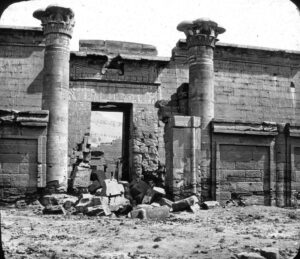The Sea Peoples and Their Contributions to Civilization, Avner Raban and Robert R. Stieglitz, Biblical Archaeology Review (17:6), Nov/Dec 1991.
The Sea Peoples are unappreciated. This is in part because the most famous of them, the Philistines, received such bad press in the Bible. But the other Sea Peoples—among them the Shardana, Sikila, Lukka and the Danuna—have also been treated poorly, even by scholars, who often blame them for causing the widespread disorder and destruction that occurred throughout the eastern Mediterranean world at the end of the Late Bronze Age (about 1250–1200 B.C.E.a)—for undermining the social, economic and military organization of Bronze Age civilization, and for bringing it to an end.
A famous Egyptian relief has, like the Bible, contributed to the unfavorable light in which the Sea Peoples are viewed—the well-known battle scene between the Egyptians and the Sea Peoples depicted by Ramesses III (1182–1151 B.C.E.) on the walls of his mortuary temple at Medinet Habu (part of the Theban necropolis) in Upper Egypt.
New archaeological data, however, require us to reevaluate this unflattering portrait. Much recent data suggests that the Sea Peoples were a constructive element in the Levant. The fact is that the Sea Peoples brought exciting technological advances to the Canaanite world in which they settled.
That, in short, is the burden of this article.
Read the rest of The Sea Peoples and Their Contributions to Civilization in the online Biblical Archaeology Society Library.




